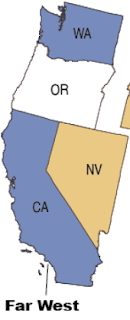May 2020 data released earlier this year by the U.S. Bureau of Labor Statistics (BLS) put nurse practitioner (NP) employment in the United States at more than 303,000. The six-state New England region held more than 17,900 nurse practitioner jobs at that time. BLS data indicated New England to be a moderately good one for nurse practitioner pay, despite the fact that two states in the region had a NP annual mean wage level that was below the national average. The other four states in the region, all of whom had NP annual mean wage levels higher than the national average, were home to over three-quarters of the region's NPs. Moreover, half the NPs in the region lived in Massachusetts, a state that ranked among the ten best states in the country for nurse practitioner annual mean wages. A closer examination of BLS data from May 2024 shows the following about nurse practitioner pay in New England:
 |
| Nurse Practitioner Pay in New England |
| State | # Employed | Annual Mean Wages | Wage Rank* |
| CT | 3,680 | $141,140 | 7th |
| MA | 8,920 | $145,140 | 4th |
| ME | 1,630 | $127,750 | 28th |
| NH | 1,790 | $133,660 | 13th |
| RI | 1,200 | $139,600 | 9th |
| VT | 680 | $130,580 | 20th |
| U.S. | 303,410 | $130,077 | ------- |
(*) annual mean wage ranking among the 50 states and the District of Columbia
Source: U.S. Bureau of Labor Statistics OES. Data extracted on July 23, 2025




